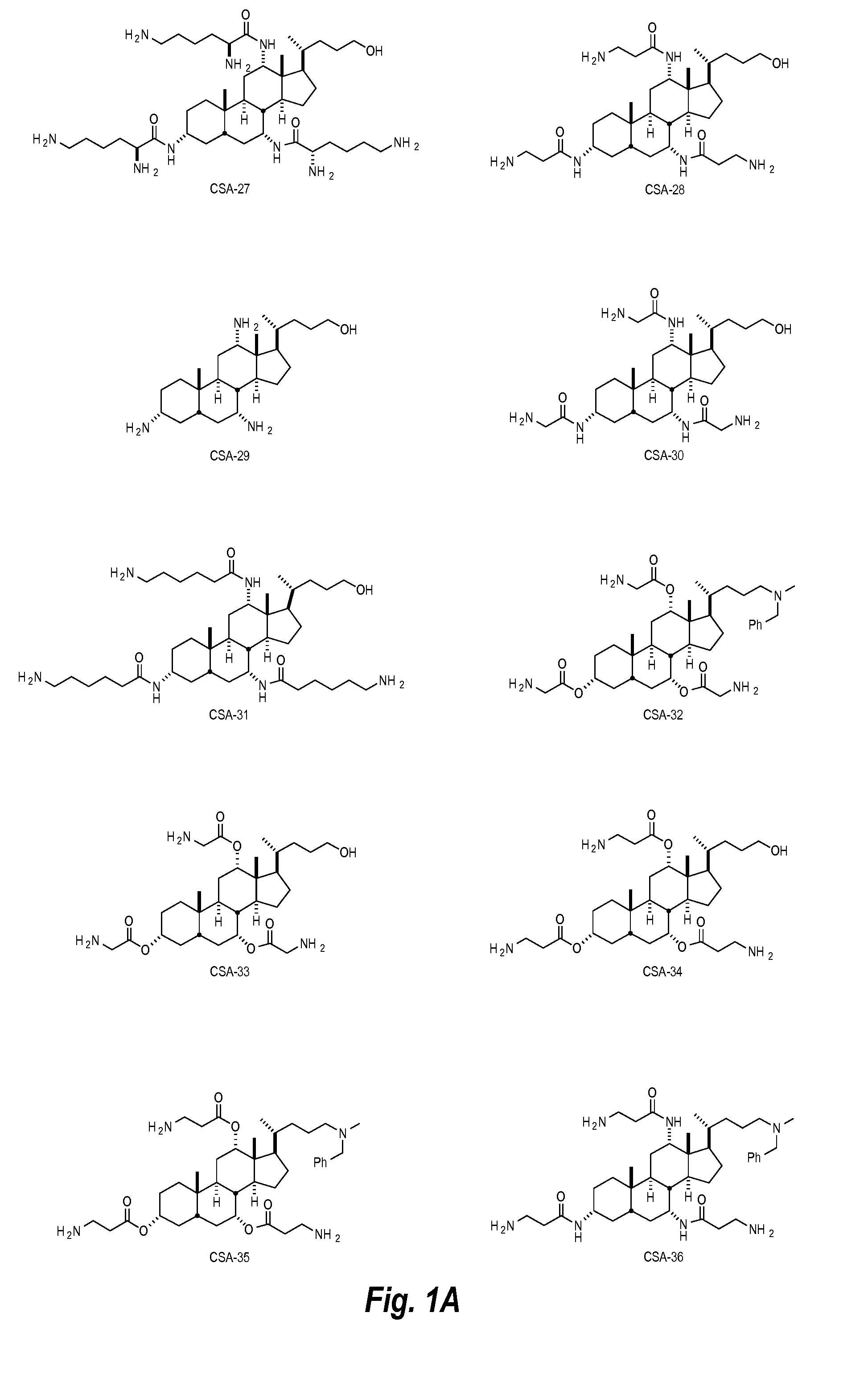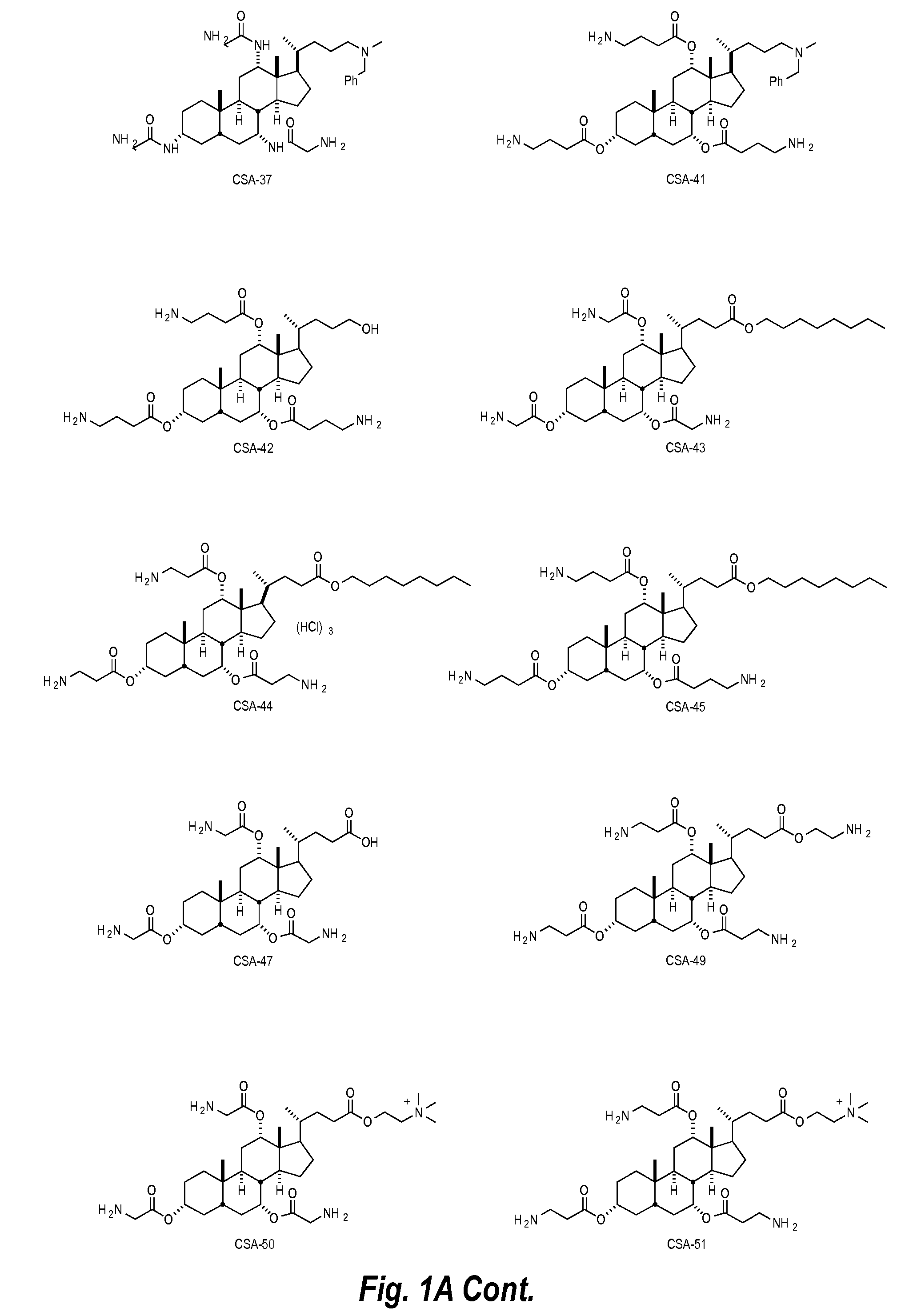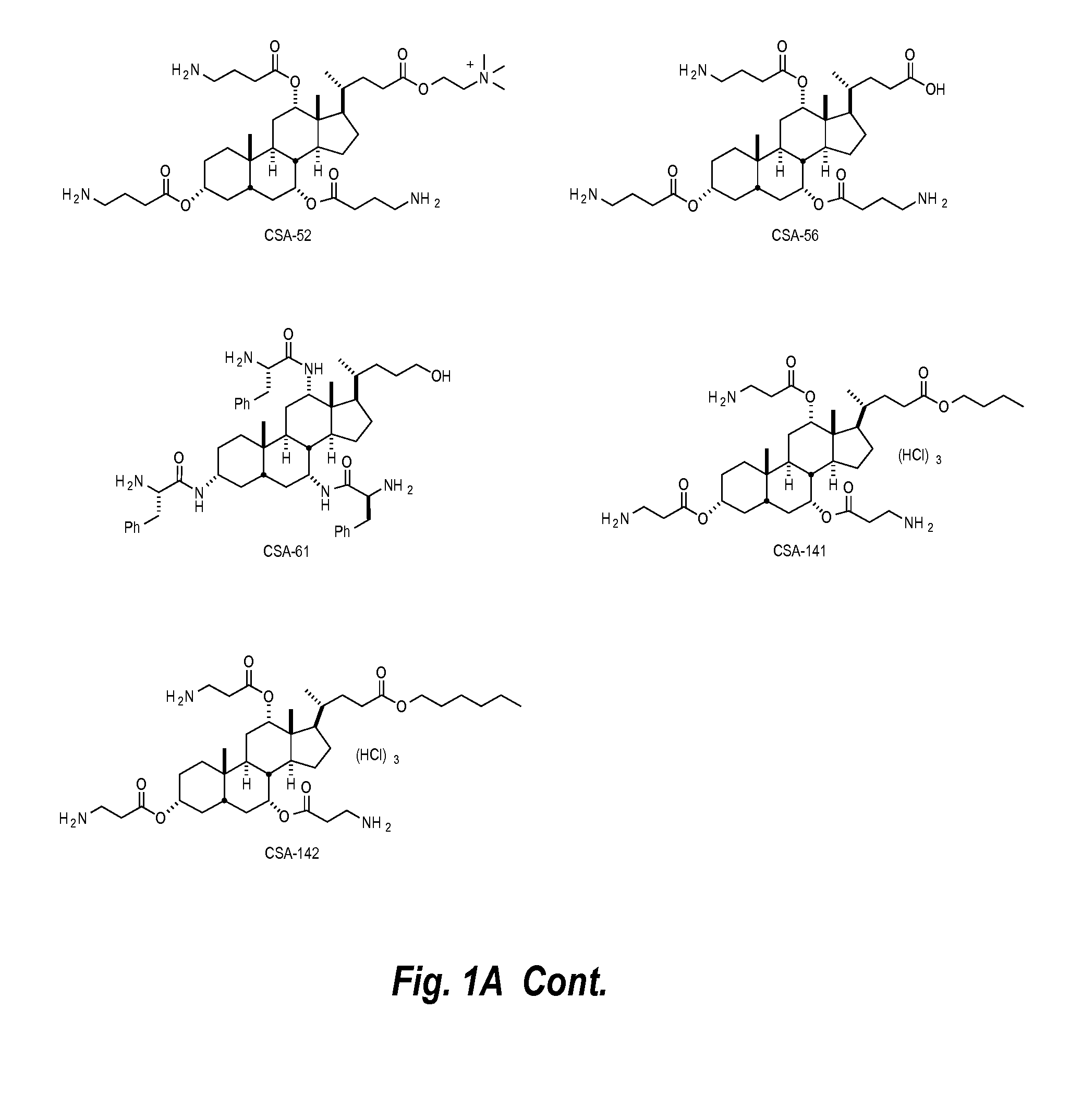Anti-microbial wash compositions including ceragenin compounds and methods of use for treating non-meat food products
a technology of ceragenin and ceragenin, which is applied in the direction of boron compound active ingredients, animal repellents, biocide, etc., can solve the problems of destroying the ceragenin compound during cooking, and achieve the effects of limiting reducing the risk of ingestion of ceragenin, and reducing the risk of ingestion
- Summary
- Abstract
- Description
- Claims
- Application Information
AI Technical Summary
Benefits of technology
Problems solved by technology
Method used
Image
Examples
example 1
[0076]A study was performed to determine the effectiveness of an anti-microbial rinse composition including relatively low concentrations of a ceragenin compound in controlling growth of bacteria and extending shelf-life of a food product. Three different wash compositions were prepared. Aqueous wash composition 1 (the control) included no ceragenin compound or other anti-microbial agent. Aqueous wash composition 1 was simply tap water. Aqueous wash composition 2 included a 50 ppm ceragenin compound concentration by weight in tap water, and had a pH of 6.5. Aqueous wash composition 3 included a 100 ppm ceragenin compound concentration by weight in tap water, and had a pH of 6.5. The ceragenin compound employed was CSA-44. A food product was dipped (e.g., immersed) for 30 seconds into the given wash composition and mechanically agitated to mimic the action of a finishing chiller used in commercial processing. After the 30 second application time, the dipped food products were immedia...
examples 2-3
[0080]Example 2 was performed to determine the effectiveness of an anti-microbial wash composition including a ceragenin compound in controlling growth of Salmonella bacteria by fighting off a Salmonella inoculation. Example 3 was similarly performed to determine the effectiveness of the wash composition in controlling growth of Campylobacter bacteria by fighting off a Campylobacter inoculation. Examples 2 and 3 simulate the effectiveness of the present anti-microbial wash compositions to kill Salmonella and Campylobacter on a food product where the food product has become contaminated with Salmonella bacteria or Campylobacter bacteria.
[0081]A total of 15 food product samples were used for these tests. The 15 samples were divided into five groups of three each. Three samples were left untreated to serve as a negative control in order to observe natural levels of bacteria present on the samples. The remaining 12 samples were then inoculated with 1 mL of Salmonella and 1 mL of Campylo...
example 4
[0088]Example 6 illustrates microbial colonization where a food product has been treated with ceragenin compounds at 7, 14, and 21 days. Food products were inoculated on day 1 with 10̂6 Salmonella and Campylobacter. The ceragenin compound was applied at day 10. Therefore, day 7 data does not reflect any ceragenin treatment. The results (colony forming units / sample) are illustrated in Table 2 below.
TABLE 27 days14 days21 daysWater (control)4.406540182.732393763.99174278550 ppm CSA5.1661255053.7369056262.835966777100 ppm CSA4.4747017813.186108382.672097858
[0089]There is a natural tendency for colonization to initially decrease over time, which is observed in the data in Table 2. However, as expected, by day 21 microbial colonization rebounded and continued to grow. In contrast, samples treated with 50 ppm and 100 ppm CSA continued declining through day 21. These results illustrate the desired resistance to colonization over time of food products treated according to the methods descri...
PUM
 Login to View More
Login to View More Abstract
Description
Claims
Application Information
 Login to View More
Login to View More - R&D
- Intellectual Property
- Life Sciences
- Materials
- Tech Scout
- Unparalleled Data Quality
- Higher Quality Content
- 60% Fewer Hallucinations
Browse by: Latest US Patents, China's latest patents, Technical Efficacy Thesaurus, Application Domain, Technology Topic, Popular Technical Reports.
© 2025 PatSnap. All rights reserved.Legal|Privacy policy|Modern Slavery Act Transparency Statement|Sitemap|About US| Contact US: help@patsnap.com



